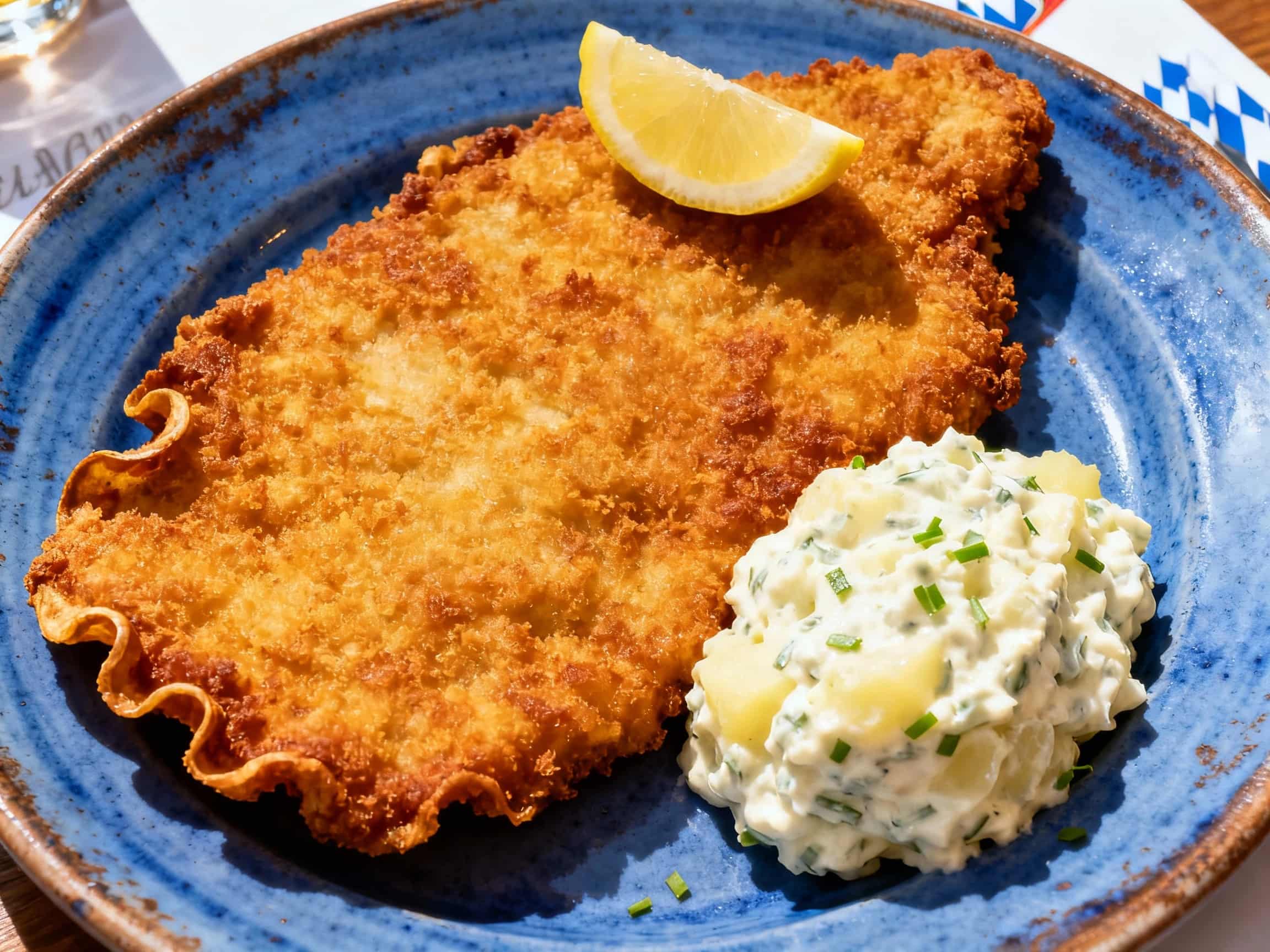
Schnitzel
Schnitzel
- Country
- Germany
- Region
- Bavaria
- Recipes
- 3 Recipes
Dish information
Schnitzel, a culinary masterpiece renowned for its crispy exterior and tender interior, has a rich history intertwined with the cuisines of both Austria and Germany. While often associated with Vienna, the exact origins of breaded and fried meat cutlets are debated. Some culinary historians trace the concept back to a Milanese dish called 'cotoletta alla milanese', which may have influenced Austrian cooks. The Viennese Schnitzel, traditionally made with thin veal cutlets, gained significant popularity in the 19th century and became a celebrated national dish of Austria. In Germany, particularly in Bavaria where it is a beloved staple, Schnitzel is commonly prepared using pork, making it more accessible and a favorite in traditional inns and beer halls. The preparation is an art form: the meat is pounded thin, coated in flour, egg, and breadcrumbs, then pan-fried in butter or lard until golden and puffed. This technique ensures a light, airy crispiness. Schnitzel represents more than just a meal; it's a symbol of hearty, comforting European fare, often enjoyed with a squeeze of lemon, potato salad, or fries. Its presence at celebrations and family gatherings underscores its cultural importance in German-speaking countries.
Timeline
The dish's popularity in Vienna begins to surge, potentially influenced by Italian cuisine.
Schnitzel is widely recognized as a key dish in Viennese and Austrian cuisine.
The technique of pan-frying breaded cutlets becomes a standard in German culinary practices.
Schnitzel becomes a very popular and accessible dish in post-war Germany.
Variations of Schnitzel, including pork and chicken, are enjoyed globally.


